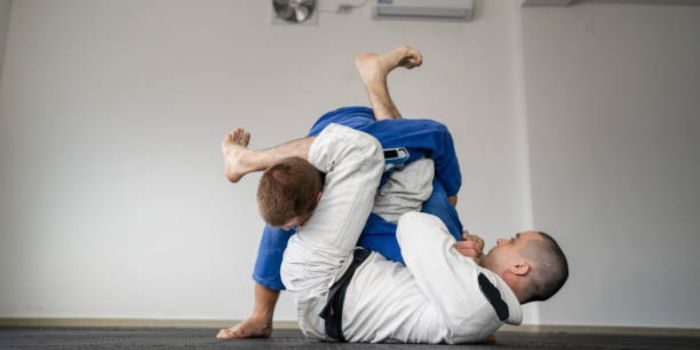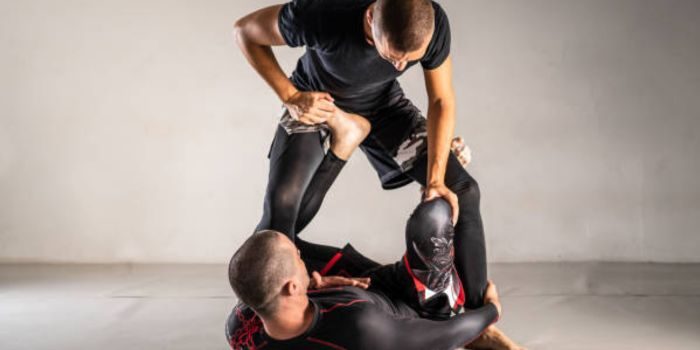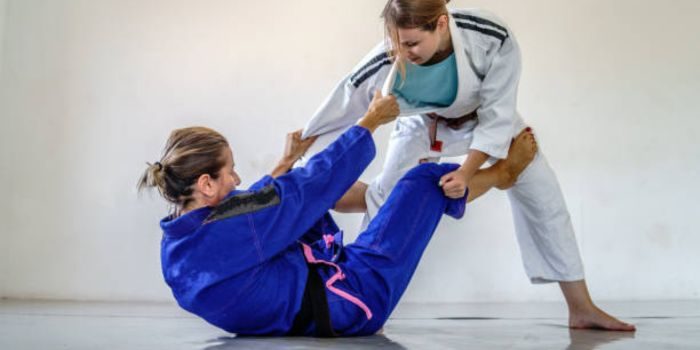Brazilian Jiu-Jitsu (BJJ) is a martial art that emphasizes ground fighting and submission holds, with the guard being a fundamental position. Among the variety of guards in BJJ, one that particularly stands out for its dynamic nature and effectiveness is the X Guard. This position allows for a diverse set of sweeps and submissions, making it a favorite among practitioners looking to expand their game.
My first encounter with this position was in a BJJ seminar, and it immediately caught my attention. The level of control and the options it provided were impressive. From that moment, I embarked on a journey to master it, and in this article, I will share the insights I’ve gained along the way.
The X Guard is not just about controlling an opponent; it’s about using their movements against them. As we delve into the intricacies of this position, I’ll guide you through the basics, common pitfalls, essential sweeps, advanced techniques, and more, all tailored to help you incorporate the X Guard jiu jitsu into your BJJ arsenal effectively.
Understanding the basics of the X Guard BJJ position
To adeptly utilize this guard, one must first comprehend its fundamental mechanics. The position is aptly named for the X shape your legs form when they’re entwined with your opponent’s leg. This configuration is achieved by placing one leg across your opponent’s thigh, with your foot hooked behind their far knee, while your other leg threads underneath their near leg, with your foot on their hip.
The key to a robust guard lies in maintaining tension and control. Your grips should be secure, and your body optimally aligned, ensuring that your opponent cannot easily escape or pass your guard. My journey in perfecting this guard began with countless hours of drilling these basics until they became second nature.
As I practiced, I learned the importance of staying active with my hooks and continuously adjusting my position based on my opponent’s movements. It became clear that this guard is as much about offense as it is about defense, offering a dynamic platform from which to launch attacks.

Common mistakes to avoid
Throughout my training, I’ve observed several common errors that practitioners make when attempting to hold this guard. Firstly, failing to maintain tension in the legs can result in a loss of control, allowing the opponent to pass easily. It’s crucial to keep your legs active and engaged to prevent this.
Another mistake is neglecting the upper body grips. Without proper control of your opponent’s sleeves or wrists, they can posture up and break your guard. Grip strength and placement are vital components that I have worked tirelessly to improve.
Lastly, a lack of movement and adaptability can lead to a stagnant guard. This guard is not a static position; one must be willing to transition and flow with the opponent’s attempts to escape. Focusing on mobility and transitions in my training has been instrumental in overcoming this pitfall.
Essential sweeps from the X Guard
This guard offers a plethora of sweeping opportunities. One of my favorite sweeps to execute is the Stand Up Sweep. By lifting your opponent with your leg hooks and coming up to your feet, you can unbalance them and take the top position. This sweep has been a reliable tool in my BJJ matches, often catching opponents off guard.
Another fundamental sweep is the Technical Stand Up Sweep. By using the momentum of your hip escape and the leverage of your hooks, you can effectively off-balance your opponent and sweep them over. This technique requires precise timing and has been a focus of my training regimen.
This guard also sets the stage for the jiu jitsu X Guard Scissor Sweep. By chopping down with the leg on the hip and lifting with the leg behind the knee, you create a scissoring motion that can sweep even the most stable opponents. Mastering this sweep took practice, but it has become a cornerstone of my guard game.
Advanced techniques and submissions from the X Guard
As I progressed in my BJJ journey, I began exploring advanced techniques and submissions from this guard. One such technique is transitioning to the Leg Drag position, which can lead to the back take. By maneuvering your opponent’s leg across their body, you can expose their back for further control and submission attempts.
Submissions are also viable from this guard. The Straight Ankle Lock, for instance, is a submission I have had great success with. By controlling one leg and isolating the other, you can apply pressure to the ankle, forcing your opponent to tap out. This submission requires precision and an understanding of leg entanglements, which I have honed through dedicated practice.
Another submission that has become a favorite of mine is the xguard to X Armbar. By transitioning to the armbar while maintaining the X configuration on your opponent’s leg, you can catch them by surprise and secure a quick submission. This move epitomizes the versatility and offensive potential of this guard.
Strategies for using the X Guard in no-gi BJJ
No-gi BJJ presents unique challenges when implementing this guard due to the lack of grips on the gi. However, I have found that by focusing on underhooks and wrist control, this guard remains an effective tool. The use of no-gi hooks, such as the butterfly hook, also plays a crucial role in maintaining control and executing sweeps.
In no-gi scenarios, it’s paramount to adapt your strategy to account for the increased slipperiness and movement. This means being more aggressive with your attacks and transitions. My no-gi X Guard game has evolved to become more fluid and assertive, which has proven effective in competition.
Additionally, the incorporation of leg locks and heel hooks can elevate your no-gi X Guard game. As these submissions are more prevalent in no-gi grappling, being proficient in leg entanglements and attacks from this guard position has become an essential aspect of my training.

Recommended BJJ gear for the X Guard position
The right gear can make a significant difference in your performance. For no-gi BJJ, quality rash guards and grappling shorts are essential. They should provide comfort, flexibility, and durability to withstand the rigors of training. I’ve personally found that rash guards specifically designed for grappling offer the best fit and functionality.
When it comes to gi-based BJJ, a well-fitting gi is crucial. It should be tough enough to endure constant gripping and pulling, yet light enough to allow for fluid movement. Additionally, investing in a good BJJ belt that won’t come undone easily can prevent unnecessary interruptions during training or matches.
Lastly, knee pads or braces can offer extra support and protection when playing this guard. Given the amount of time spent on your back and the pressure exerted on your knees, I consider these an important part of my gear, ensuring I can train safely and consistently.

Conclusion
The journey to mastering this guard in BJJ is one of dedication, practice, and continuous learning. This position has become a staple of my game, offering me countless options to control, sweep, and submit my opponents. By understanding the fundamentals, avoiding common mistakes, and drilling essential sweeps and submissions, any practitioner can add this dynamic guard to their repertoire.Whether you’re rolling in no-gi or donning the gi, this guard is a versatile and powerful tool that can elevate your BJJ game. Remember to adapt your techniques to the format you’re practicing and always be open to learning and evolving.
FAQ's
How do you get into X guard BJJ?
Entering this guard can be done from various positions, such as open guard or butterfly guard. One common method is to use a combination of hooks and grips to elevate your opponent and slide your legs into the X configuration. Consistent practice and drilling of entries will make the transition smoother and more instinctive.
What is an X guard?
This guard is a type of guard in BJJ where the practitioner’s legs form an ‘X’ around one of the opponent’s legs. This position allows for control and leverage, enabling sweeps and submissions while preventing the opponent from passing the guard.
What is the difference between X guard and reverse X guard?
The main difference lies in the leg positioning. In the standard X Guard, the leg that is on top crosses over the opponent’s thigh, while in the reverse X Guard, the top leg hooks around the opponent’s shin or ankle. Both guards offer unique advantages and can be used depending on the situation.
How many types of guards are there in BJJ?
There are numerous types of guards in BJJ, including but not limited to closed guard, open guard, half guard, butterfly guard, spider guard, De La Riva guard, and many more. Each guard has its own set of techniques, strategies, and variations.
What is the Z guard in BJJ?
The Z Guard, also known as the knee shield guard, is a type of half guard where the bottom practitioner creates a ‘Z’ shape with their legs. The top leg forms a shield across the opponent’s torso, providing distance management and opportunities for sweeps and submissions.
Feel free to comment down there,what you think about this blog.I would be happy.


